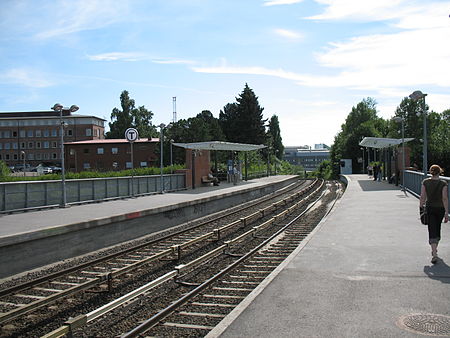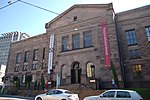Forskningsparken station

Forskningsparken is a rapid transit station on the Sognsvann Line of the Oslo Metro. It also serves as a light rail station for the Ullevål Hageby Line of the Oslo Tramway. It is located at the north of the Blindern campus of the University of Oslo in the Nordre Aker borough of Oslo, Norway. The decision to build the station was made in 1998, and it opened in 1999, replacing the former station Vestgrensa, and allowed interchange between the metro and the tramway. The Ullevål Hageby Line was at the same time extended to serve the new Rikshospitalet. Forskningsparken is served by lines 4 and 5 of the metro, each operating every 15 minutes and providing services along both the Sognsvann Line and the Ring Line. Lines 17 and 18 of the tramway serve Forskningsparken, operating to Rikshospitalet and the city center.
Excerpt from the Wikipedia article Forskningsparken station (License: CC BY-SA 3.0, Authors, Images).Forskningsparken station
Problemveien, Oslo Nordre Aker
Geographical coordinates (GPS) Address Nearby Places Show on map
Geographical coordinates (GPS)
| Latitude | Longitude |
|---|---|
| N 59.943611111111 ° | E 10.721111111111 ° |
Address
Problemveien
Problemveien
0349 Oslo, Nordre Aker
Norway
Open on Google Maps









